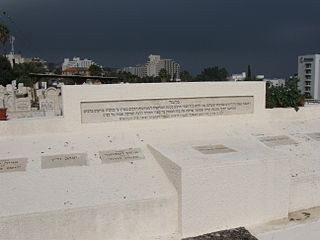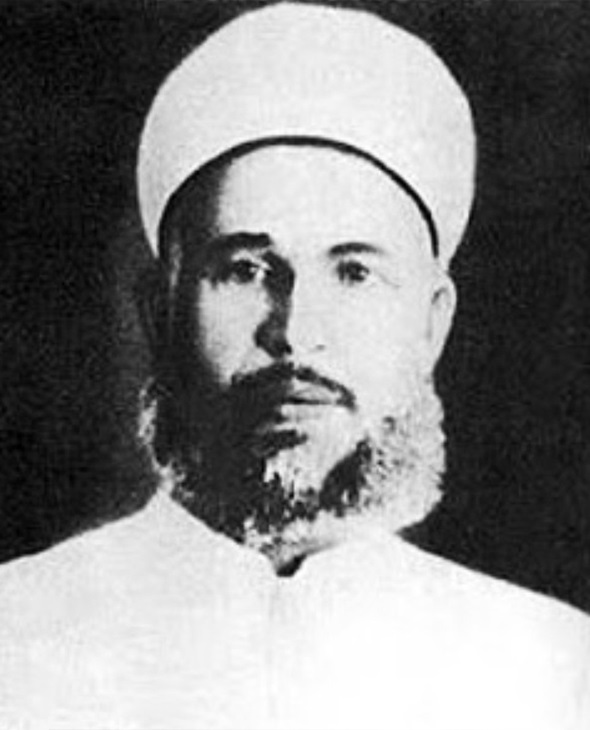
The Irgun was a Zionist paramilitary organization that operated in Mandate Palestine between 1931 and 1948. It was an offshoot of the older and larger Jewish paramilitary organization Haganah. When the group broke from the Haganah it became known as the Haganah Bet, or alternatively as haHaganah haLeumit or Hama'amad. Irgun members were absorbed into the Israel Defense Forces at the start of the 1948 Arab–Israeli war. The Irgun is also referred to as Etzel, an acronym of the Hebrew initials, or by the abbreviation IZL.

Zionist political violence or refers to acts of violence or terror committed by Zionists.
Haganah was a Jewish paramilitary organization in the British Mandate of Palestine (1921–48), which became the core of the Israel Defense Forces (IDF).

The 1936–1939 Arab revolt in Palestine, later came to be known as "The Great Revolt", was a nationalist uprising by Palestinian Arabs in Mandatory Palestine against the British administration of the Palestine Mandate, demanding Arab independence and the end of the policy of open-ended Jewish immigration and land purchases with the stated goal of establishing a "Jewish National Home". The dissent was directly influenced by the Qassamite rebellion, following the killing of Sheikh Izz ad-Din al-Qassam in 1935, as well as the declaration by Hajj Amin al-Husseini of 16 May 1936 as 'Palestine Day' and calling for a General Strike. The revolt was branded by many in the Jewish Yishuv as "immoral and terroristic", often comparing it to fascism and nazism. Ben Gurion however described Arab causes as fear of growing Jewish economic power, opposition to mass Jewish immigration and fear of the English identification with Zionism.

The Yishuv or Ha-Yishuv or Ha-Yishuv Ha-Ivri is the term referring to the body of Jewish residents in the land of Israel prior to the establishment of the State of Israel. The term came into use in the 1880s, when there were about 25,000 Jews living across the Land of Israel, then comprising the southern part of Ottoman Syria, and continued to be used until 1948, by which time there were some 630,000 Jews there. The term is used in Hebrew even nowadays to denote the Pre-State Jewish residents in the Land of Israel.

The Haifa Oil Refinery massacre took place on 30 December 1947 in Mandatory Palestine. It began when six Arabs were killed and 42 wounded after members of the Zionist paramilitary organisation, the Irgun, threw a number of grenades at a crowd of about 100 Arab day-labourers. These Arab day-labourers had gathered outside the main gate of the then British-owned Haifa Oil Refinery to look for work.

The 1947 Jerusalem Riots occurred following the vote in the UN General Assembly in favour of the 1947 UN Partition Plan on 29 November 1947.

Al-Shaykh Muwannis, also Sheikh Munis, was a small Palestinian Arab village in the Jaffa Subdistrict of Mandatory Palestine, located approximately 8.5 kilometers from the center of Jaffa city in territory earmarked for Jewish statehood under the UN Partition Plan. The village was abandoned in March 1948 under pressure from Jewish militia, two months before the 1948 Arab–Israeli war. Today, Tel Aviv University lies on part of the village land.

The 1929 Arab riots in Palestine, or the Buraq Uprising, also known as the 1929 Massacres, refers to a series of demonstrations and riots in late August 1929 when a long-running dispute between Muslims and Jews over access to the Western Wall in Jerusalem escalated into violence. The riots took the form, in the most part, of attacks by Arabs on Jews accompanied by destruction of Jewish property. During the week of riots from 23 to 29 August, 133 Jews were killed and between 198–241 others were injured, a large majority of whom were unarmed and were murdered in their homes by Arabs, while at least 116 Arabs were killed and at least 232 were injured, mostly by the British police while trying to suppress the riots, although around 20 were killed by Jewish attacks or indiscriminate British gunfire. During the riots, 17 Jewish communities were evacuated.

The Tiberias massacre took place on 2 October 1938, during the 1936–39 Arab revolt in Tiberias, then located in the British Mandate of Palestine and today is located in the State of Israel.

The Sergeants affair was an incident that took place in Mandate Palestine in July 1947 during Jewish insurgency in Palestine, in which the Jewish underground group Irgun kidnapped two British Army Intelligence Corps NCOs, Sergeant Clifford Martin and Sergeant Mervyn Paice and threatened to hang them if the death sentences passed on three Irgun militants: Avshalom Haviv, Meir Nakar, and Yaakov Weiss, were carried out. The three had been captured by the British during the Acre Prison break, tried, and convicted on charges of illegal possession of arms, and with 'intent to kill or cause other harm to a large number of people'. When the three men were executed by hanging, the Irgun killed the two sergeants and hanged their booby-trapped bodies in a eucalyptus grove near Netanya. When the bodies were found, the booby trap injured a British officer as they were cut down. This act was widely condemned in both Palestine and the UK. After hearing of the deaths some British troops and policemen attacked Jews in Tel Aviv, killing five and injuring others. The killings also sparked off rioting in some British cities.

The Jewish insurgency in Mandatory Palestine involved paramilitary actions carried out by Jewish underground groups against the British forces and officials in Mandatory Palestine. The tensions between Jewish militant underground organizations and the British mandatory authorities rose from 1938 and intensified with the publication of the White Paper of 1939, which outlined new government policies to place further restrictions on Jewish immigration and land purchases and declared the intention of giving independence to Palestine, with an Arab majority, within ten years. Though World War II brought relative calm, the tensions again escalated into an armed struggle towards the end of the war, when it became clear that the Axis Powers were close to defeat. The conflict with the British lasted until the eruption of the civil war and to some degree also until the termination of the British Mandate for Palestine and the establishment of the State of Israel in May 1948.
Operation Hametz was a Jewish operation towards the end of the British Mandate of Palestine, as part of the 1948 Palestine war. It was launched at the end of April 1948 with the objective of capturing villages inland from Jaffa and establishing a blockade around the town. The operation, which led to the first direct battle between the British and the Irgun, was seen as a great victory for the latter, and enabled the Irgun to take credit for the complete conquest of Jaffa that happened on May 13.

Abu Kabir was a satellite village of Jaffa founded by Egyptians following Ibrahim Pasha's 1832 defeat of Turkish forces in Ottoman era Palestine. During the 1948 Palestine war, it was mostly abandoned and later destroyed. After Israel's establishment in 1948, the area became part of south Tel Aviv. Officially named Giv'at Herzl, the name of an adjacent Jewish neighborhood, the name Abu Kabir continued to be used. Part or all of Abu Kabir was officially renamed Tabitha by the Tel Aviv municipality in 2011.

Events in the year 1948 in the British Mandate of Palestine.

Events in the year 1947 in the British Mandate of Palestine.
The 1933 Palestine riots were a series of violent riots in Mandatory Palestine, as part of the intercommunal conflict in Mandatory Palestine. The riots erupted on 28 October 1933, initiated by the Arab Executive Committee. The riots came as the culmination of Arab resentment at Jewish migration after it surged to new heights following the rise of Nazi Germany, and at the British Mandate authorities for allegedly facilitating Jewish land purchases. The second mass demonstration, at Jaffa in October, turned into a bloodbath when police fired on the thousands-strong crowd, killing 19 and injuring some 70. The "Jaffa massacre", as Palestinians called it, quickly triggered further unrest, including a week-long general strike and urban insurrections that resulted in state security forces killing 7 more Arabs and wounding another 130 with gunfire.
This is a timeline of intercommunal conflict in Mandatory Palestine.
The 1936 shooting of two Jews on the road between Anabta and Tulkarm took place in British Mandatory Palestine. Jews retaliated the next day against Arabs in Tel Aviv killing two in Petah Tikvah.
Black Sunday, 1937 refers to a series of acts undertaken by Jewish militants of the Irgun faction against Arab civilians on 14 November 1937. It was among the first challenges to the Havlagah policy not to retaliate against Arab attacks on Jewish civilians.

















